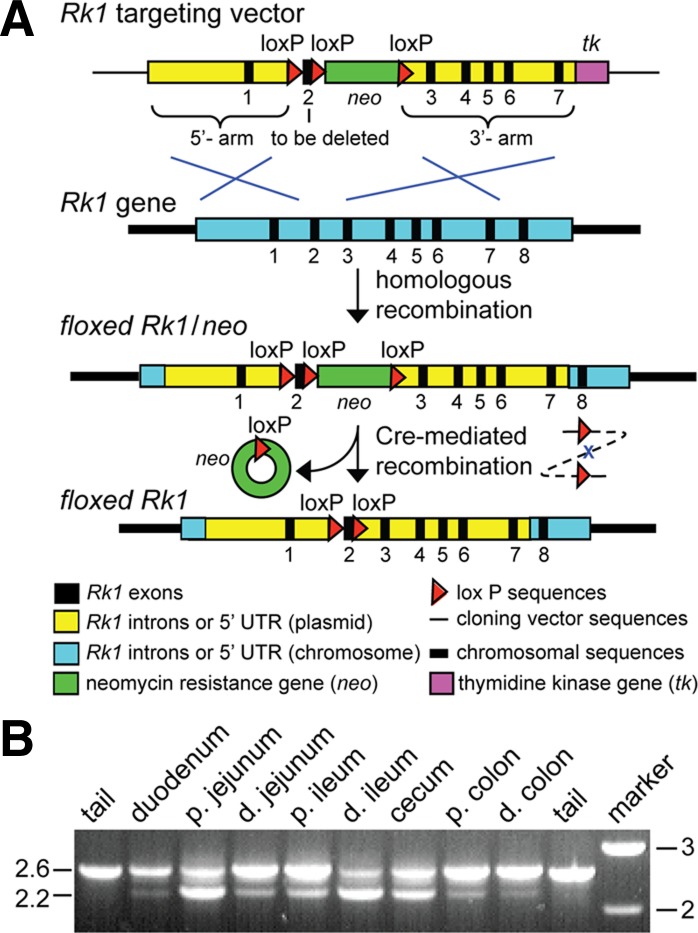Fig. 1.
Generation of a mouse line with receptor for activated C kinase 1 (Rack1) deleted in intestinal epithelia. A: generation of floxed-Rack1 mice. First panel: Rack1 (Rk1) targeting vector. PL452 vector containing mouse genomic Rack1 fragments (amplified from mouse 129/Sv genomic DNA) with a loxP sequence inserted into intron 1 and a neo gene (flanked by loxP) inserted into intron 2. 5′-Arm (2.15 kb): Rack1 5′-untranslated region (UTR), exon 1, most of intron 1, and a loxP sequence added to the 3′-end. 3′-Arm (4.29 kb): Rack1 sequence extending from intron 2 to 7. Second panel: the chromosomal Rack1 gene. Third panel: the floxed-Rack1 allele containing the neo gene. Following electroporation of the targeting vector into embryonic stem (ES) cells, ES clones were selected by neo+ (positive selection) and tk− (negative selection), and homologous recombinants were identified by PCR and Southern blot analyses. Fourth panel: the floxed-Rack1 allele. To generate a chromosomal copy of floxed-Rack1 in the ES cell line, neo was deleted by transient expression of Cre recombinase. B: Rack1 deletion in the intestine of a mouse carrying vil-Cre and floxed-Rack1 (vil-Cre:Rack1+/fl). Intestinal DNA from a vil-Cre:Rack1+/fl mouse was examined for Rack1 deletion by PCR analyses. Tail DNA analysis was included as a control. The 2.6-kb fragment corresponds to the floxed-Rack1 allele (exon 2 present), and the 2.2-kb fragment corresponds to the mutant Rack1 allele (exon 2 deleted). p., proximal; d., distal.

